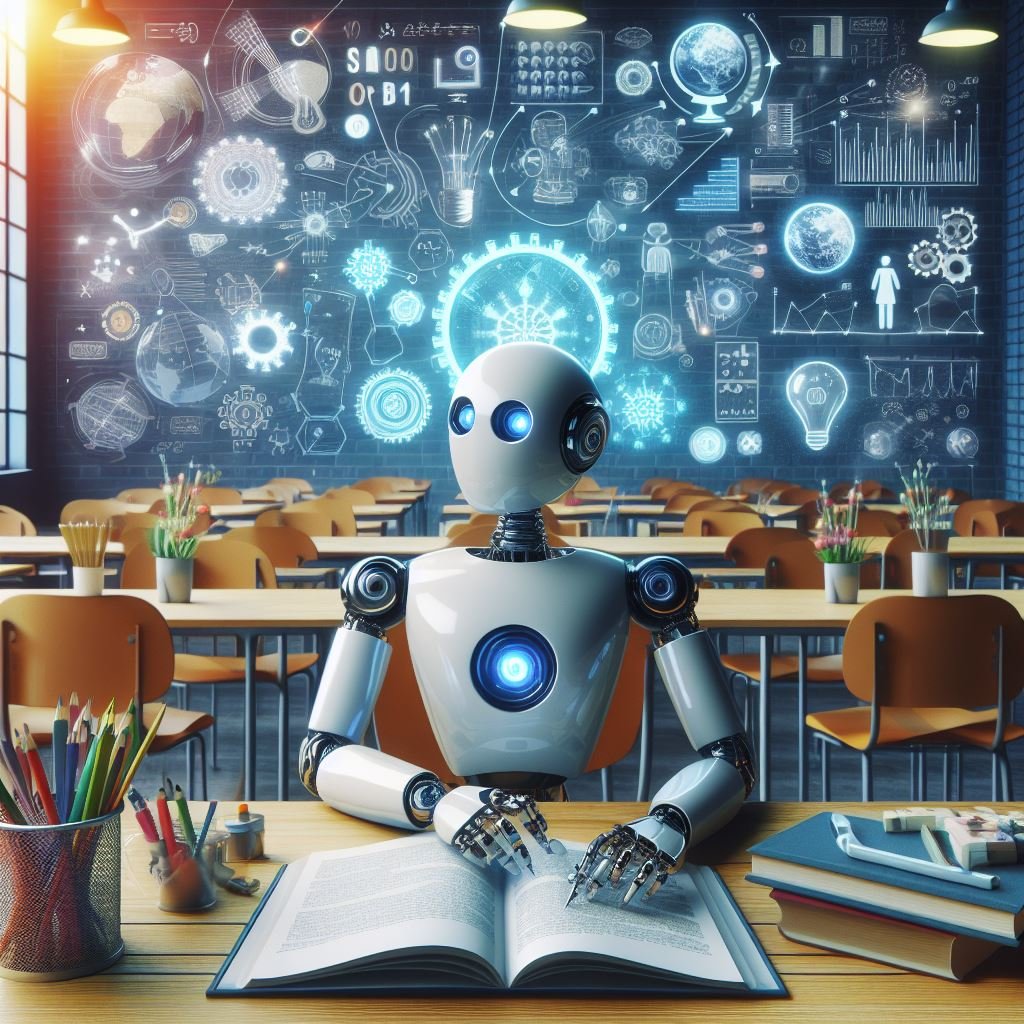Automating Education: How Robotics and Automation Are Changing Learning

Have you ever thought about how robots and automation are transforming education? Let's explore! Robotics involves building and operating robots, while automation refers to technology taking over tasks with minimal human involvement. In education, these concepts are revolutionizing the way we learn!
Now, imagine this: from elementary or primary school as we call it here in Namibia all the way to university, students are engaging with robotics programs where they can design, build, and program their own robots. It's not just about textbooks and lectures anymore – it's about hands-on learning, creativity, and learning through trial and error. Exciting, isn't it? But beyond excitement, this is shaping the future of education!
In this article, we'll discuss how robotics and automation are enhancing student engagement, personalizing learning experiences, and preparing students for the future job market.
Engaging Students with Hands-On Learning
Robotics programs, from elementary to university levels, provide hands-on learning experiences where students can design, build, and program robots. This approach fosters skills such as perseverance, teamwork, and creative problem-solving.
Personalized Learning through Automation
Automation is reshaping personalized learning by using AI-driven algorithms to analyze data and tailor educational experiences to individual needs. This enhances student engagement, comprehension, and helps address learning gaps more effectively.
Breaking Down Barriers to Access
The integration of robotics and automation promotes inclusivity in education by providing students from diverse backgrounds access to high-quality resources and opportunities through virtual classrooms, online tutorials, and remote competitions.
Preparing Students for the Future Workforce
Robotics and automation play a vital role in preparing students for the future job market. Early exposure to these technologies equips students with essential skills for success in an increasingly automated world.
Challenges and Considerations Integrating robotics and automation in education poses several challenges:
- Resource Accessibility: Access to robotics and automation resources may be limited in certain educational institutions or regions, posing a challenge to equitable participation and learning opportunities.
- Training and Professional Development: Educators require adequate training and professional development to effectively integrate robotics and automation into their teaching practices. This necessitates investment in ongoing training programs and resources.
- Infrastructure and Technology Access: Schools and educational institutions need robust infrastructure and access to up-to-date technology to support robotics and automation initiatives. Lack of proper infrastructure can hinder the implementation of these programs.
- Cost: Implementing robotics and automation programs can be costly, requiring investment in equipment, software, and training. Financial constraints may limit the adoption of these technologies, especially in underfunded schools or districts.
- Curriculum Integration: Integrating robotics and automation into existing curricula requires careful planning and alignment with educational standards. Ensuring that these programs complement and enhance learning goals can be a complex task for educators and administrators.
Considerations:
- Ethical Considerations: Ethical concerns related to data privacy, security, and the responsible use of AI technologies must be addressed in robotics and automation education. Educators need to navigate these ethical issues while providing engaging and meaningful learning experiences.
- Diversity and Inclusion: There may be disparities in access and participation based on gender, socioeconomic status, or other factors. Efforts are needed to promote diversity and inclusion in robotics and automation education to ensure that all students have equal opportunities.
- Teacher Resistance: Some educators may resist the adoption of robotics and automation due to a lack of familiarity, fear of technology replacing traditional teaching methods, or concerns about job security. Overcoming resistance and fostering buy-in from educators is crucial for successful implementation.
- Maintenance and Support: Ongoing maintenance and technical support are essential to keep robotics and automation equipment functional and up-to-date. Schools need reliable support systems in place to address technical issues and ensure the sustainability of these programs.
- Evaluation and Assessment: Developing appropriate methods for evaluating student learning and assessing the effectiveness of robotics and automation programs can be challenging. Educators need to design meaningful assessment strategies that capture students' skills and competencies in these areas.
The Role of Educators in a Technological Age
Educators play a crucial role in navigating the changing educational landscape. While technology enhances learning, skilled educators provide guidance, mentorship, and human connection.
The Evolution of Robotics in Education
Robotics has evolved from industrial applications to a valuable tool for engaging students in STEM subjects. This evolution democratizes hands-on learning experiences and deepens understanding through practical application.
Collaborative Learning Opportunities
Robotics in education promotes collaborative learning environments, enhancing students' understanding of robotics principles and cultivating teamwork and communication skills.
The Impact of Automation on Teaching Methods
Automation streamlines administrative tasks, allowing educators more time for personalized interactions with students, emphasizing mentorship and fostering meaningful connections.
Ethical Considerations in Tech-Driven Education
Educators must navigate ethical issues such as data privacy and responsible AI use to maximize benefits while minimizing risks in tech-driven education.
Adaptability as a Key Skill
Early exposure to robotics and automation instills adaptability, preparing students for the evolving job market and life's challenges.
Embracing Lifelong Learning
Robotics and automation underscore the importance of lifelong learning, promoting continuous pursuit of knowledge to stay relevant in a technology-driven world.
Wrapping up
The integration of robotics and automation is reshaping education by providing collaborative learning opportunities, addressing ethical considerations, emphasizing adaptability, and promoting lifelong learning. Overcoming challenges will contribute to creating an inclusive, dynamic educational ecosystem for present and future generations.